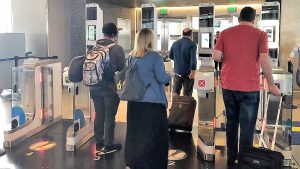
Face recognition algorithms produce different rates of accuracy based on sex, age, and race or country of birth although algorithms that are more accurate generally produce fewer errors, says a new report by the National Institute of Standards and Technology (NIST). NIST says the study on demographic effects is the “first of-its-kind and is the third report so far by NIST under its Face Recognition Vendor Test effort. It concludes that “We found empirical evidence for the existence of demographic…

 By
By 











